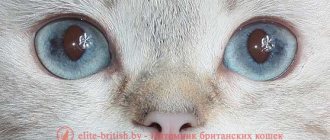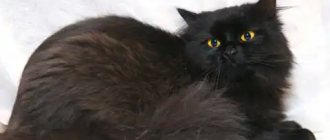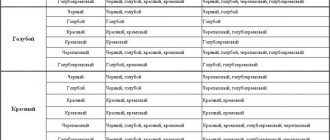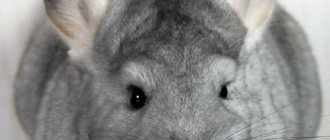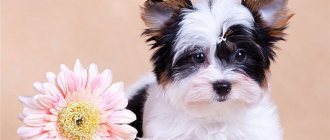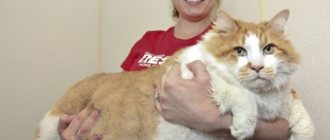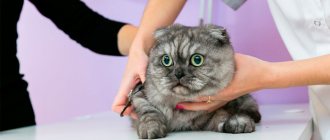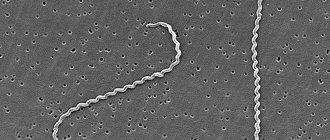The tabby color in cats does not indicate that the pet belongs to a specific breed. This coat color is considered one of the most ancient and beautiful varieties. A large number of breeds have a striped pattern, which is a hereditary trait. Among tabby cats, there are very rare and unusual individuals that attract attention with an intricate combination of stripes and curls.
Features of tabby color
The intricately spotted colors of a cat's fur are considered the most natural. Therefore, it is the most common compared to other colors.
What does it look like
The English word tabby is translated as “motley” or “striped.” A peculiar natural coloring is observed in babies almost from birth, and with age it acquires a finished appearance. Despite the large combination of various patterns, all animals have features that unite them:
- a mark in the shape of the letter M in the forehead area;
- bright edging around the nose and eyes;
- ornament in the form of a necklace and “bracelets” on the tail and paws.
The irises of cats and tabby cats come in mostly warm shades: yellow, light brown or copper. Only some representatives with silver shades have green eyes.
Origins and genetics
The tabby color in cats appeared due to the peculiarities of genetics. Here the influence of gene “A” (agouti), which belongs to the group of superdominant ones, is manifested. It is he who has the ability to color the hairs on the animal’s body in a special way - with alternating different tones.
Dark areas are more clearly defined due to the large amount of eumelanin (dark pigment). In the light parts of the coat there is much less of this pigment, which gives the effect of alternation and contrast, which is so attractive with its beauty and originality.
All fluffies initially have a tabby color according to their genotype. This is evidenced by the residual “baby” tabby in kittens, which disappears after the first molt - the babies acquire the colors characteristic of their breed.
Scientific research has proven that the stripes and spots on the body of domestic whiskers are similar to the appearance of African, Asian and European wild cats. Accordingly, there are five genetically related clusters in different parts of the world.
An interesting version of the origin of the name itself. According to legend, the name of the color was given in honor of the Attabiya district in Baghdad. Amazingly beautiful fabrics with unusual patterns were supplied to England from this place in the 17th-18th centuries. A fan of whiskers thought that the stripes on the cat's body were very similar to bizarre stains on fabric.
Breeders tend to classify all medieval mustaches as this type. Indeed, a large number of engravings and illustrations of that time show striped individuals. From the end of the 17th century, the term tabby cat began to be used to refer to all tabby-spotted individuals. After some time the second word was omitted.
What does the color of a tabby cat mean: features
Tabby or tabby is the name of the pattern, meaning motley, speckled, striped. This is the natural color of animals, which they inherited from their distant ancestors. Lines and dots on the fur of various colors helped small animals hide unnoticed in bushes from predators, and larger cats camouflaged themselves to catch prey.
Only cats have the tabby color. This is the most natural coat color, called wild. In the process of breeding animals, many new breeds were developed with different patterns on the coat, different shades. Each pattern is individual and it is impossible to meet animals with identical markings.
You can distinguish tabby cats from other felines by the following features:
- the “M” symbol located on the head;
- along the contrasting rim bordering the eyes and nose;
- along the stripes on the chest;
- along the transverse lines on the paws and tail;
- by marks on the stomach, arranged in rows;
Individuals with silver fur are green-eyed, while breeds of other colors have orange eyes, brown and other warm shades.
Types of tabby colors by pattern
Based on numerous photos on the Internet, it can be seen that tabby colors in cats are varied. There are several generally accepted patterns that vary genetically. These types are: classic, ticked, spotted and striped. The remaining species are presented as a mixture of tabby color with other types.
All of these variations were identified in populations during random breeding. Some unusual patterns of this type are noticeable in different breeds. For example, a modified type of the classic species is observed among representatives of the Sokoke species. Presumably this is due to the combination of wild and domestic genotypes. Rosette and marble patterns are characteristic of Bengals.
Classic (marble)
This type of tabby cat is considered one of the most traditional and beautiful. The ornament in the form of spiral or graphic patterns is located throughout the pet’s body. The patterns on the back and sides of the animal are clearly presented; on the legs and neck they have faint outlines.
The body of the marbled tabby is covered with large spots and curls that resemble human eyes, butterfly wings, and a snail. The shade of the patterns is very different from the main tone of the coat. Representatives of the cat family with this color are characterized by any colors - with the exception of white.
Striped (mackerel)
The variation, which is characterized by clear narrow stripes located throughout the body, has several names: mackerel, brindle or striped tabby. The latter name is associated with the mackerel fish, which also has stripes all over its body.
The pattern on the skin of mackerel tabby cats is clearly marked and starts from the ridge line. Descending towards the abdominal area, the stripes branch out. The tone of the pattern differs greatly from the main background of the hairline. An M-shaped mark on the forehead appears along with dark stripes at the corners of the eyes and on the cheeks of the animal.
Spotted
Stripes on the body of spotted individuals are completely excluded. The pattern is presented in the form of intermittent dots or spots with jagged edges. The color scheme of the patterns may differ slightly or strongly contrast compared to the main background. Individuals with spotted tabby coloration are very similar to miniature wild cats.
This species is a modification of the mackerel species, in which the stripes are divided into spots. Notable examples are the Maine Coon, Ocicat, Egyptian and Arabian Mau, Bengal, Australian Mist, Serengeti, and Savannah breeds.
Ticked
The ticked tabby color in cats is considered one of the most refined and inconspicuous. Initially, it seems that the coat has a uniform color. But, if you look closely, a pronounced ornament on the muzzle, paws, and tail becomes noticeable. A closer examination of the pet allows you to notice faint stripes and spots throughout the body. They differ from the main background by only a few tones. This type is found in Abyssinian cats.
Rosette or leopard print
This type is a rare variant. It is characterized by large spots located throughout the body of the animal. The circles have a dark edge, resembling an uneven circle, and a pale center. The main color of the hair and the color of the markings are different. On the pet's head, neck and paws the pattern is presented in the form of dark stripes.
Tortoiseshell
This type is rare. Its main feature is the presence of two primary colors - most often black and yellow. The pattern of individuals with a tortoiseshell pattern is not clear and graphic. It does not have a precise order and is not clearly expressed against the general background.
Calico
The uniqueness of this color is its three-color base. Usually the animal's paws, chest, tail and muzzle are white. The pattern on the back and head resembles short lines and large spots. Breeders gave another name to this type - spotted with white.
Tabby point
Tabby point cats look very interesting. The main spotting of the pet is concentrated in the area around the eyes. The forelimbs have a pattern in the form of torn rings. The hind legs of the fluffy are monochromatic. Distinct stripes stand out on the hips. The fur on the ears is the same tone. It is mandatory to have a light mark on the outer part of the auricle.
Tabby drawing: cat breeds that have it
In some cats, patterned coloring is the only one, while in others it is one of the possible ones.
Abyssinian cat
In this breed, the standard allows only one-color ticked color. The color of the short coat can be bright orange, copper, blue, etc. White spots on the chest and chin are allowed. The abdomen and limbs are lighter on the inside. There is a dark stripe running along the ridge to the very tip of the tail. The eyes are hazel, golden, sometimes green. The shade of the nose and feet corresponds to the basic tone. The color of the iris is often yellowish-orange, sometimes greenish.
Abyssinian cats have only one-color ticked fur
Video: Abyssinian beauties
Singapura cat
The only permitted and acceptable color according to the standard is sepia agouti. The main background is close in color to ivory, with clear dark brown ticking. A dark stripe runs along the spine and to the tip of the tail. The chest, chin and belly are a warm, lighter, brownish shade. Residual pale stripes occur on the knees of the hind legs and on the inside of the forelimbs. The pads of the paws are brownish-pinkish, the shade of the nose is from delicate light salmon to rich dark. The iris of the eyes is colored in green, yellow and greenish-yellowish shades.
All Singaporeans are painted the same
Somali cat
The palette of ticked colors is quite wide (wild, sorrel, blue, black silver, fawn). Wools of a basic tone (red, blue, cream, white, etc.) with contrasting tips. A dark shade is observed along the entire spine and tail. The inside of the limbs and belly are a shade lighter. The color of the nose and paw pads varies from pink and bluish-gray to black. Eyes in bluish-green or yellowish-green tones.
The Somali cat has a dark stripe running down its back and tail.
Ocicat
Wild spotted coloring, in which darker contrasting spots are scattered against the main agouti background (beige, pale blue, red, etc.), with intermittent stripes along the ridge. On the sides and on the belly, the markings are slightly lighter and spaced a little less frequently. The skin on the nose is brick red or pink, the feet and tip of the tail are in contrasting tone. Eyes can be painted in any color, excluding blue and blue.
The Ocicat has a wild spotted coloration
Video: Ocicat cats
Pixie bob
Soft ticked wool of light warm brown tones, with a darker, distinct pattern of spots, small stripes or rosettes. The tip of the tail is almost black. The fur on the belly is spotted and lighter. Eye color ranges from light gold to brown or greenish gooseberry. The paw pads are dark brown or black, the nose is brick.
Pixie bobs have short tails
Color variations
Among the representatives of the tabby cat family, silver individuals predominate. There are also gray tabbies with patterns of different shades. This could be a purple, chocolate, blue, smoky and reddish palette.
Such colors often depend on the ornament presented on the body. For example, the classic or marble version combines different dark lines and a pale tone of the fur coat.
When varying with spots, a pattern in a warm palette predominates. Mackerel or striped combines dark stains on a silver or gray cover. With the ticked version, almost the entire palette of colors that is possible in the cat world is observed. Here are the most popular varieties:
- Smoky type
– the pattern resembles the coat of a wild lynx combined with the black color of a tabby.
- Silver tabby
- a drawing of a darker tone on a white background.
- Blue tabby
– gray and blue patterns stand out on pale fur.
- Brown tabby
- black and smoky ornament located on a red-brown background.
- Black silver tabby
– the smoky pattern is on gray wool.
- Sil-type
– pale brown dots are visible on the cream-colored coat, paws, ears, tail and muzzle are striped.
- Lilac tabby
– purple pattern on light beige hair.
- Red tabby
– a reddish ornament stands out on the peach cover.
- Cream tabby
– cream patterns are located on the coat several shades paler.
The listed options are the most popular among cats. However, many years of selective research by breeders have made it possible to create a large number of color combinations characteristic of certain breed representatives.
Color classification options
Nicknames for British cats: examples of interesting names
There are several types of tabby color.
Marbled Tabby
If there are certain stains on the sides of a cat that look like marble, then this animal is a marbled species. Moreover, sometimes experts call such a pattern classic.
As a rule, the body of a “marbled” cat is decorated with large spots, various kinds of curls, intriguing patterns, drawings a la “butterfly”, “human eye” or “oyster shell”. There is slight spotting on the belly and cheeks. In turn, spiral or linear patterns are located on the neck and paws. And the tail of such tabby specimens is colored with interesting ring stripes. The color background of these images should clearly contrast with the main background of a different color.
Classic (marble)
Mackerel
This color is similar to the fur of a tiger. The “coat” of such a cat has patterns consisting of narrow lines that are located parallel and vertical. This type of pattern received its additional “nickname” - tabby mackerel - due to its resemblance to the coloring of a real sea fish, known specifically as mackerel. The brindle tabby pattern usually starts from the cat's ridge line, gradually descending down to the belly in the form of numerous branches. The color of the stripes sharply contrasts with the main tone of the cat’s “fur coat”.
Cat with mackerel pattern
Other options
Among other types of patterns, first of all, it should be noted the ticked version, which is the most delicate and inconspicuous among the types of tabby patterns. It is more clearly expressed on the muzzle, paws and tail. At the same time, barely noticeable “freckles” are “splattered” all over the body, which differ from the basic background of the fur by only a few positions. Abyssinian cats, first of all, can boast of this type of color.
You can often see spotted tabby. In the colors of "spotted" cats, stripes on the coat seem to be absent, and if they exist, they are intermittent and very short. That’s why the cat’s “fur coat” is decorated with dots, spots and peculiar “blots”. The color of the patterns is quite bright, noticeably different from the main tone. These cats are somewhat reminiscent of leopards.
In addition, among other color options, rarer types can be noted: rosette, tortoiseshell, clicquot color (a white tone is added to the two main ones), patchel (patch color), links point (only some small fragments of the body are colored in tabby style).
Tabby Color Standards
It doesn’t matter what type the fluffy one belongs to - the animals are still characterized by some features that unite them. First of all, this is the presence of a spiral or graphic pattern. It is created by two types of hairs, forming a ticking. Some hairs are not completely colored and serve as the basis, while others are painted entirely in the main tone of the pattern.
Cats are also distinguished by an original pattern on their forehead, which resembles the letter M. On the outside of the ears, furry animals have light oval-shaped dots. The eyes and nose are outlined by stripes of a basic tone.
Fine lines are clearly visible on the muzzle. They are less noticeable in silver or golden individuals. The eyelids and chin are a little paler, and in the cheek area you can see elegant patterns in the form of spirals. The lips and pads of the hind and forelimbs are highly pigmented.
The chest is decorated with stripes, shaped like a necklace or choker. The same patterns, in a smaller version, are found on the front and hind legs, as well as the tail.
On the stomach of cats there are double spots placed in two lines. The pattern is drawn clearly, so it looks contrasting. In photos of pets, it is noticeable that the silver tabby often has a bright green iris, while other types are golden-yellow or copper-orange.
BRITISH STRIPED COLOR (BRINCH, MACKERL)
The striped color of the British (British brindle tabby) must comply with all the same standards as the spotted one, only the pattern on the back and sides must have clear and uninterrupted stripes. In the color of a British Tabby Shorthair cat, the stripes should start at the spine and extend all the way to the paws. The stripes of a British brindle cat are narrow and frequent (and it is believed that the more often the better). Mackerel stripes (mackerel) should not intersect each other, be strictly vertical and always contrasting.
A brindle (striped) British kitten, even with very clear stripes, can “stretch” its color by adulthood and, if the stripes begin to be interrupted anywhere, the color is reviewed by experts and assigned - spotted. The full color of a British brindle kitten will be formed only by the age of one year (other tabby colors are not subject to such changes and most often do not change the appearance of the tabby pattern in adulthood).
British tabby cats are not as common as spotted cats, but more common than marbled cats.
The eye color of British tabby cats can be copper (golden, orange) or green (gold, occasionally silver).
Chocolate tabby British kitten: photo of California
Cat breeds with this color
There are a large number of tabby cats. They can be seen among the most elite breeds and among domestic representatives. All pets have an interesting pattern and markings on their foreheads.
The most popular tabby cat breed among breeders is the British breed. People are attracted by its unusual appearance, which is the result of many years of selection and successful crossing experiments. There are a number of variations of the breed, in which there are types of mackerel, classic, ticked, spotted. The British are characterized by symmetrical spots with clear lines and contrasting patterns.
Other popular representatives are Scottish individuals. Their main features are the presence of a contrasting M mark, a rim around the nose and eyes, as well as rings on the paws and tail. The most common are marbled representatives, but Scots are also brindle and spotted.
Another famous breed with an unusual appearance is the Maine Coon. It is characterized by a smoky or brown variation and a variety of types - from classic to leopard. Maine Coons are not only ticked. The long hair of individuals can be dyed completely or only at the tips.
Other breeds with tabby color:
- Siberians;
- pixie bob;
- Bengals;
- Ceylonese representatives;
- Persians;
- safari;
- toyger;
- sokoke;
- Egyptian Mau;
- leohouse;
- savannah.
The only breed whose representatives have their type reflected in their name is the Asian tabby. These short-haired individuals were bred in England at the end of the last century. Asians are friendly and inquisitive. They come in four main pattern types: classic, striped, spotted and ticked. Sometimes tortoiseshells are also found.
Domestic mustaches that have not acquired a pedigree may also have patterns on their bodies corresponding to their type. Sometimes outbred individuals have a surprisingly wide color palette. Such combinations, invented by nature itself, will definitely not be obtained as a result of breeding work.
Difficulties in breeding tabby cats
When breeding tabby cats, difficulties arise if you do not know what dominant and recessive genes are and how they are passed on to future offspring. By their nature, all cats are initially tabbies, since the T (tabby) gene is present in their genetic code, although the pattern does not always appear.
Color genetics:
- The color of the skin and the appearance of ornaments on it are influenced by the agouti gene (A). It has the ability to color hairs in different shades. The shade lies in transverse lines alternating from light to dark.
- If the agouti gene is dominant (AA), the dark stripes on the hairs are colored more densely, and the light areas receive less coloring pigment. This way the contrast of the tabby pattern becomes brighter and more noticeable.
- Cats with solid coats have the recessive (aa) agouti gene. The hair is dyed evenly and equally along its entire length, because this is how the pigment is distributed. It follows from this that agouti only deals with the distribution of color along the hair and does not affect the amount of pigment.
- What shade the fur and eyes will be depends on the saturation of the coloring pigment, for which the melanin gene is responsible.
In which breeds is the tabby pattern considered a defect?
Among the variety of cats, there are breeds for which the presence of an ornament of stripes or spots is unacceptable. The appearance of such marks will be considered a deviation from the standards, and the individual will be discarded during selection or breeding.
Among the breeds without tabby patterns inherent in the type, you can see very popular species: Russian Blue, Burmese, Havana Brown, Bombay, Chartreuse, Korat. The coat of these representatives has colors and patterns specific to their breed - usually monochromatic or a combination of both.
As a result of the domestication of wild individuals and successful breeding work, many representatives of cats appeared with various stripes and spots on the body. Such animals are the most common and popular all over the world.
World famous Taxisdo cats
Did you know that Dr. Suess in the movie The Cat in the Hat was also a Taxido? Just like Felix the cat. Looney Tunes from Twitty and Sylvester is another famous tuxedo cat that many people will remember fondly. If you are a fan of Disney's “Pinocchio,” then remember the star of this cartoon, Figaro! Andrew Lloyd Webber's musical Cats (soon to be a feature film!) even has its own famous Tuxedo cat, none other than the magical Mr. Mistofflies.
Want to know the most common names for a tuxedo cat? Here are the big winners: Sox, Felix, Panda, Figaro, Penguin, Oreo, Patch, Domino and Sylvester.
Classic color varieties
The colors of Thai cats are a separate issue. They are very diverse. All representatives of the breed are distinguished by the “Siamese color”. Professionals also call it:
- Himalayan;
- acromelanistic;
- pointed.
It is easy to recognize: the animal’s body is white (it can have shades), and its face, ears, paws and tail are painted in a contrasting shade: brown (chocolate), red (red), lilac (lilac) - there are a lot of options.
But the peculiarity of the color is not only in the unusual combination of colors. It “blooms” as the animal matures. Thai breed kittens are born completely white. Over time, marks of a different shade appear on their body. In the future, it all may become dark.
If the markings (points) and the leading color of the coat contrast brightly, you can think about the pet’s participation in exhibitions. Professionals also evaluate how evenly colored the marks are.
Color combinations on the animal's body are classic and modern. Traditionally, the Thai Shorthair cat can have the following colors:
- seal point. The main coat color is light cream, fading to light brown. The marks are characterized by a rich dark brown, almost black tint. Eye color is deep blue. They themselves are bright and glow beautifully. Paws covered with light hair and a greenish iris will be faults;
- blue point. The body coat is bluish-white, often characterized by a cool tone, but a warm undertone may be present. Shades the color of the markings - deep bluish-gray. It is important that the ears do not differ from the other points and are not darker than them. The color of the nose and soles of the paws resembles dark slate. Bright iris of deep blue hue. The blue tone present in the color tightens the requirements for eye color. If he is pale, then surrounded by bluish-gray points on his face he will not look at all expressive;
- chocolate point. The name of the color speaks for itself. The fur on the animal's body is a noble ivory color. Brown markings, reminiscent of milk chocolate in tone, stand out effectively on it. The iris is blue, sometimes with a violet tint. Over the years, the color of the coat remains almost unchanged. The color received recognition in 1950;
INTERESTING TO FIND OUT: What are the colors of Siberian cats?
- Lilac point or frost point. The leading color is magnolia. It is icy white, shaded with an ivory tone. The markings are gray-purple-pink. The eyes are a little paler than other Thais, but not faded. The iris is light blue. The body of the animal retains the combination of points and leading color given by nature throughout its life, practically without darkening. The color, called lilac point, was officially recognized in 1954.
Specifics of tabby point color
Cats with tabby point color are very impressive. In the USA it is better known as links point. Instead of the usual solid points for Thais, the markings on their body are formed by clearly visible stripes, the colors of which can be varied. The name of such a cat always indicates color:
- seal tabby point if the stripes are black;
- blue tabby point with bluish-gray markings;
- red tabby point when they are reddish-gold.
The tabby point color is characterized by a distinct pattern in the form of the letter “M”, into which the stripes on the animal’s forehead are folded. They also cover the fur around the eyes, clearly highlighting the nose. Specks are visible in the mustache area. On the front paws, the markings take the form of torn rings.
They originate from the fingers and head upward. Contrasting stripes clearly appear on the hips. The fur on the hind legs at the back is solid color. It is limited by the hock joint.
The ears are monochromatic; on the outside there is always a light spot on them, reminiscent of a thumbprint. If the animal's color is diluted or weakened, it will be less noticeable. The inside of the ear is lighter. The tail is covered with stripes in the form of unfinished rings. The skin on the nose is pink, outlined by the main color. On the bottom of the paws, its tone matches the color of the markings.
INTERESTING TO KNOW: The Mekong Bobtail is a blue-eyed legend of the palaces
The Seal Tabby Point color is relatively young, but this Thai cat quickly became popular. In Russia, its appearance coincided with the breeding of the Neva Masquerade. Selection work with Thais in England has been carried out for a long time. Many colors were obtained by the middle of the 20th century. The tabby point was born by chance.
At the end of the 90s, in a nursery in St. Petersburg, where Thai and Siberian cats were bred, a male and a female belonging to different breeds were mated. Her babies turned out to be white, like all Thais, and Siberian.
The owners of the nursery liked the unusual colored stripes on the kittens’ fur. Subsequently, the Seal Point and Seal Tabby Point Siberians formed a new breed - the Neva Masquerade. The tabby color also passed on to the Thais obtained from random crossing. The babies' fur was also different. Their parents had it short and half-long. The offspring turned out the same, but several kittens in the litter turned out to be “downy.”
Character of the Asian Tabby cat breed
Asian tabbies are intelligent and peaceful. Aggression is alien to them, but they are very active. They love communication and affection, and take part in games with pleasure. At the same time, cats will not insist on endless attention from the owner - they have enough intelligence and patience to wait until he finishes his business and can communicate with them. The distinctive character traits of this breed are restraint, self-esteem and excellent upbringing.
As children, Asian tabbies are very curious. Their energy is in full swing, they are ready to play until they drop. Therefore, it is necessary to look after kittens - the surprises they present may not always turn out to be pleasant. Looking for adventure is the main activity of these kittens, especially if they are bored or feel lonely.
When a tabby kitten is left alone at home, it is worth checking whether the windows are closed, as well as the doors to those rooms where the kitten is not allowed to enter, and whether there are breakable or valuable objects within the pet’s access. Otherwise, you can rest assured about the kitten - it will react calmly to separation from its owner.
Tabbie dogs show some wariness around strangers. At the same time, they are invariably “polite” in English. But household members equally bask in their love, since the Asian tabby treats each of them with great warmth, regardless of his age. But these cats have a special love for small children. They strive to surround them with almost maternal care and become very attached to them. But it is not difficult for the Asian tabby to find a common language with other family members.
This is not a weak-willed or helpless mug - a tabby will never allow himself to be offended, because he will easily put in his place anyone who crosses boundaries in communicating with her. At the same time, she will not start fights with other pets, will not bite or scratch the child, and will be careful and patient when playing with children. At the same time, the tabby will prefer to sit out the “storm” somewhere in a quiet corner.
